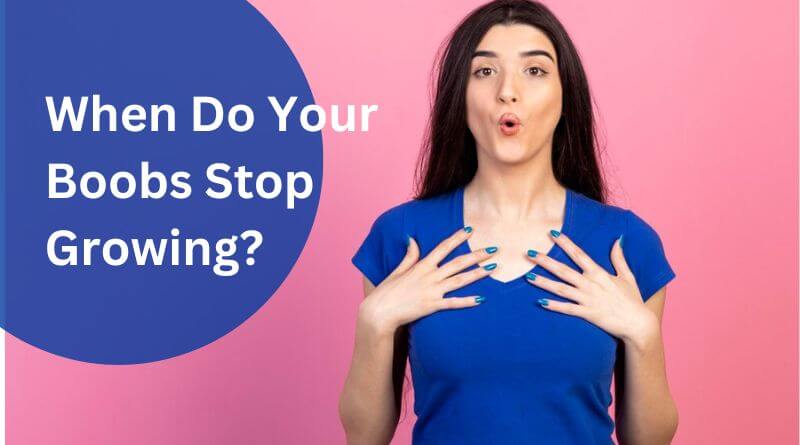Breast development is a natural process that varies from person to person. If you’re wondering, “When do your boobs stop growing?” the answer depends on multiple factors, including genetics, hormones, and overall health. In this guide, we will explore the stages of breast growth, when breasts typically stop growing, and what factors influence breast size.
Table of Contents
At What Age Do Breasts Stop Growing?
Breasts typically start developing between the ages of 8 and 13 during puberty. Most women experience continuous breast growth throughout their teenage years and into their early 20s. However, for some, breast development can continue until the mid-to-late 20s.
Breast Growth Timeline
- Stage 1 (Before Puberty): The breasts are flat with no visible signs of development.
- Stage 2 (Ages 8-13): The first signs of breast budding appear, and the areola begins to enlarge.
- Stage 3 (Ages 13-18): The breasts become fuller and rounder as glandular tissue develops.
- Stage 4 (Ages 18-25): Growth slows down but continues subtly.
- Stage 5 (Mid-20s and Beyond): Breasts reach their final size and shape, but weight fluctuations, pregnancy, and hormonal changes can still affect their appearance.
Factors That Influence Breast Size and Growth
Several factors determine when and how much your breasts grow, including:
1. Genetics
Your breast size and growth pattern are largely inherited from your family. If your mother or grandmother had a specific breast size, yours might be similar.
2. Hormones
Estrogen and progesterone play key roles in breast development. Hormonal imbalances can either speed up or slow down the process.
3. Nutrition and Diet
A well-balanced diet with adequate protein, healthy fats, and essential vitamins supports healthy breast tissue development.
4. Weight Fluctuations
Since breasts contain fatty tissue, significant weight gain or loss can change their size.
5. Birth Control and Medications
Some birth control pills and medications can impact breast growth by altering hormone levels.
6. Pregnancy and Breastfeeding
Pregnancy can cause significant breast growth due to increased estrogen and progesterone. Many women notice their breasts increase in size and fullness during pregnancy and lactation.
7. Exercise and Fitness
While exercise won’t directly make your breasts grow, strength training can improve the firmness and shape of the chest area.
What Is the Average Breast Size in the US?
The average bra size in the US has increased over the years. Today, the most common size is 34DD, but this varies by individual.
Does Breast Size Affect Health?
Breast size itself doesn’t determine overall health, but very large or small breasts can contribute to:
- Back and shoulder pain (common in women with larger breasts)
- Skin irritation under the breasts
- Confidence and self-esteem issues
How to Keep Your Breasts Firm and Healthy
If you’re looking to maintain firm young tits, here are some tips:
- Wear a well-fitted bra to provide support and prevent sagging.
- Exercise regularly, focusing on chest workouts like push-ups and bench presses.
- Stay hydrated and maintain a nutrient-rich diet.
- Moisturize to keep the skin supple and elastic.
Frequently Asked Questions (FAQs)
1. Do breasts stop growing after puberty?
Not necessarily. While breast growth slows down after puberty, it can continue into your 20s and change due to weight fluctuations, pregnancy, or hormonal shifts.
2. What determines breast size?
Genetics, hormones, body weight, and lifestyle factors all play a role in breast size.
3. Can I increase my breast size naturally?
While you can’t significantly change your breast size without surgery, gaining weight, hormonal changes, and certain birth control pills may cause an increase.
4. Do breasts get smaller with age?
Yes, hormonal changes, menopause, and loss of fat tissue can lead to smaller or less firm breasts over time.
5. What is the best bra size for support?
A well-fitted bra is crucial. Many women wear the wrong bra size, so getting measured professionally is recommended.
6. Can exercise make my breasts bigger?
Exercise won’t increase breast tissue, but it can enhance the appearance by strengthening the pectoral muscles beneath the breasts.
Final Thoughts
Breast growth is a natural and unique process that varies for every individual. Most women’s breasts stop growing by their mid-20s, but factors like weight, hormones, and pregnancy can still cause changes. Understanding your body and maintaining a healthy lifestyle can help keep your breasts firm and supported.
Sources:
- Mayo Clinic – Breast Development
- American College of Obstetricians and Gynecologists
- National Institutes of Health – Puberty & Breast Growth
Recommended Articles:


